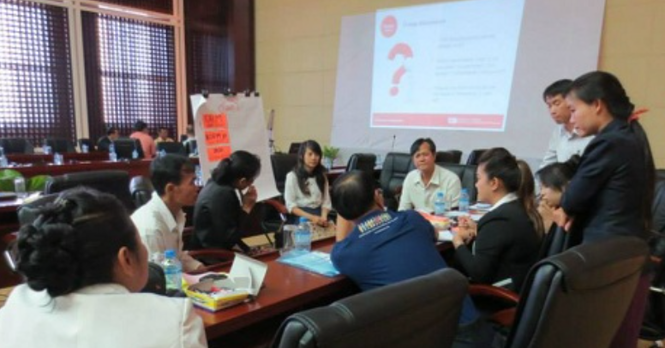
As Typhoon Haiyan approached South East Asia, governments, communities, local and international actors alike were busy preparing for the impact of this unprecedented mega storm. South East Asia is no stranger to the ‘supermarket of disasters’ experienced each year. As a result of the increasing variety, frequency and severity of these events, several governments in the region have already put in place comprehensive legal frameworks to prepare for, respond to, and reduce the risk of the mammoth disasters faced in this part of the world.
Frequently hit countries like the Philippines, Indonesia and Vietnam have led the way in terms of developing landmark laws and regulations for disaster preparedness and response, incorporating important provisions to help facilitate and regulate international assistance in the event of large-scale disasters like Typhoon Haiyan.
More recently, the Union of Myanmar and the People’s Democratic Republic of Lao have taken great strides to develop their own legal frameworks to better manage disaster preparedness, response and recovery in their countries. A new disaster management law was adopted in Myanmar in July this year, and Lao PDR has recently embarked on a process of developing a new disaster management law, with technical support from international organizations including IFRC and the United Nations Development Programme (UNDP).
The National Societies of both countries have been involved in the open, consultative processes to develop these new laws and their implementing rules and regulations. The IFRC’s Disaster Law Programme has also been supporting the Myanmar and Lao Red Cross Societies to expand their knowledge of disaster law and to engage in the legal reform process in their respective countries, including through disaster law ‘sensitization sessions’ for senior leaders and technical staff.
Lao Red Cross and IFRC are now engaged in a project to develop the new disaster management law in Lao, together with the Ministry of Natural Resources and the Environment (MoNRE) and UNDP.
In Myanmar, the National Society sits on two key bodies involved in the development of the implementing rules for the new disaster management law. It is also a member of the steering committee for the Disaster Risk Reduction Working Group, a consortium of local and international NGOS, the Red Cross and UN agencies which provides technical advice to the Myanmar Relief and Resettlement Department on the legal and institutional set-up for disaster management.
When it comes to facilitating and regulating international disaster assistance, “the human cost is the reason we need strong laws in place”, explained the President of Myanmar Red Cross, Professor Tha Hla Shwe, during a recent IFRC workshop in Bangkok. “Without a legal framework in place, it is very hard to coordinate the help we receive from outside actors.”
Regarding the role of his National Society in the law-making and implementation process, Professor Tha Hla Shwe explained that “we are not government, we are not NGOs. We are in-between. We are the first responders. We are the biggest humanitarian organization in our country, and we are legally present through our Red Cross law. We should be part of these processes and we can contribute in a very unique way.”
These thoughts were echoed by Dr Bountheng, Head of Disaster Management at Lao Red Cross. “The Lao Red Cross must be part of the law and policy development process”, he stated. “We are a key humanitarian organization in our country, with a wide reach. But at the same time, we need to think beyond the capacity of the Red Cross and even the government, in case we are hit by a big disaster. We need to be able to facilitate international disaster relief.”
In a region so frequently affected by disasters, the developments in legal preparedness across these countries are particularly significant. The Disaster Law Programme will continue to work together with National Societies across South East Asia to advocate for the inclusion of key principles of International Disaster Response Law (IDRL) and DRR in legal frameworks and to highlight the role of the Red Cross Red Crescent Movement in these processes.